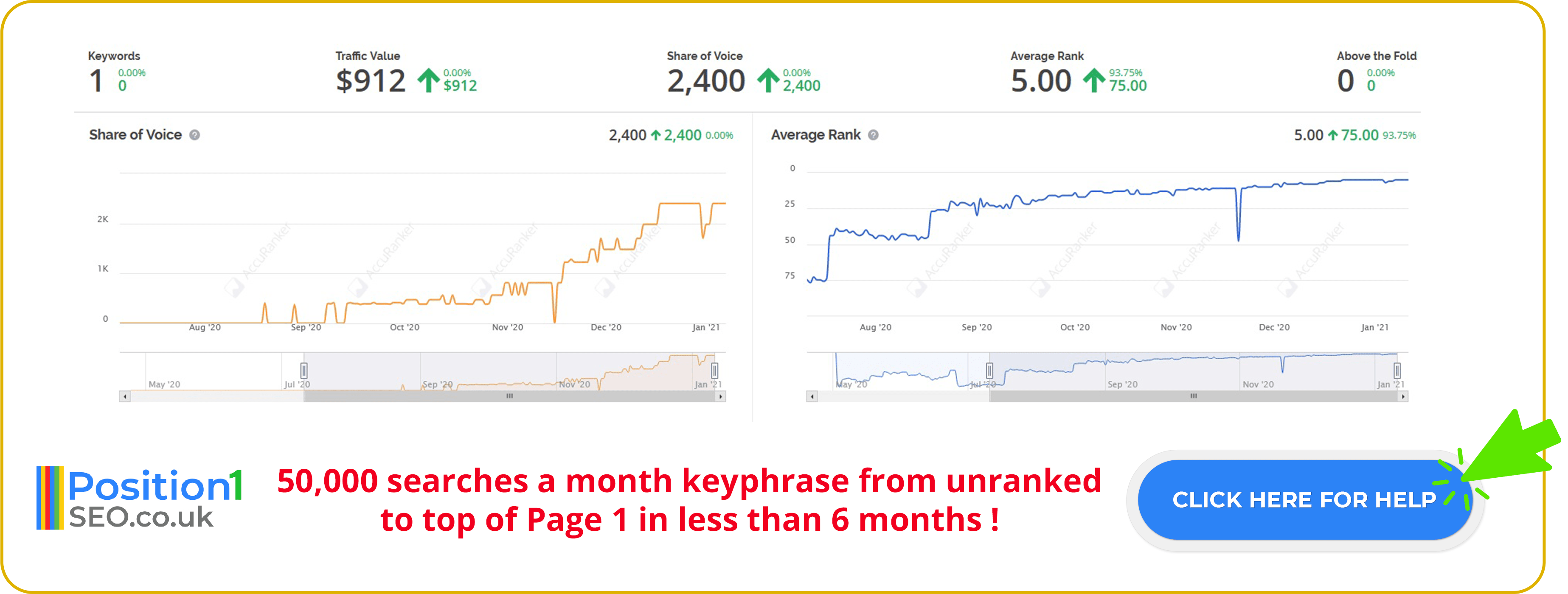
Embarking on an audit, whether it's for your finances, business operations, or any other aspect of your life, can be a daunting task. However, having a well-structured audit checklist is like having a roadmap that guides you through the entire process. It not only ensures that nothing is overlooked but also adds a layer of organization and efficiency to your auditing efforts. But what exactly are the steps of an audit checklist? In this comprehensive guide, we will delve into the essential components that make up a successful audit checklist, providing you with valuable insights to streamline your auditing process and ensure no stone is left unturned. So, whether you're a seasoned professional or a novice in the world of audits, let's explore the fundamental steps that will help you navigate this important journey with confidence.
This page supports our content about webpage optimization evaluation and you can find other in-depth information about What are the steps of an audit checklist by following this link or answers to related questions like Why do I need an SEO audit if you click here.

As we delve into the intricacies of crafting a thorough audit checklist, let's now shift our focus to some frequently asked questions that shed light on the importance of webpage optimization evaluation in this crucial process.
In an SEO page audit, the five key elements of an audit finding typically include:
These elements help create a clear and actionable audit finding, ensuring that SEO issues are addressed effectively to enhance online performance.
Issues Identified: Documenting specific problems or discrepancies found on the webpage.
Impact Assessment: Evaluating the potential consequences of these issues on SEO performance.
Recommendations: Providing actionable suggestions to address and rectify the identified problems.
Priority Ranking: Assigning importance levels to each issue, considering their impact and urgency.
Estimated Cost: Estimating the pounds required to implement the recommended changes and improvements.
The 5S audit guidelines, when applied to a webpage optimization evaluation, include:
Following these 5S audit guidelines helps maintain an optimized and user-friendly webpage, potentially boosting online performance and ROI in pounds.
Sort: Organize and declutter webpage content, removing unnecessary elements to enhance user experience and SEO.
Set in Order: Arrange and structure content logically, making it easy for users to navigate and find information.
Shine: Ensure the webpage is visually appealing, with high-quality images and well-designed layouts.
Standardize: Establish consistent SEO practices and content formatting across the website to maintain a professional image.
Sustain: Continuously monitor and update the webpage's optimization to keep it relevant and effective, investing in ongoing SEO efforts as needed.
When preparing for a page-level search engine optimization check, consider these three essential tips:
Keyword Research: Identify relevant keywords and phrases to target on the page, ensuring they align with user intent and search trends, which can improve your pounds-worth of organic traffic.
Content Optimization: Craft high-quality, engaging content that incorporates the chosen keywords naturally, providing value to users and improving SEO performance.
Technical Review: Conduct a thorough technical review of the page, checking for issues like broken links, page speed, and mobile-friendliness, as addressing these can enhance the page's ranking and contribute to a better ROI in pounds.
The audit process for a page-level search engine optimization check typically consists of four phases, each serving a specific purpose:
Planning Phase: In this initial phase, you outline the scope and objectives of the audit. Determine what aspects of the page you'll assess, establish goals for improvements, and plan the audit timeline and resources needed. Proper planning sets the foundation for a successful audit, ensuring you make the most of your investment in pounds.
Execution Phase: During this phase, you perform the actual audit. It involves conducting a detailed analysis of the page's content, structure, and technical elements. Evaluate on-page SEO factors, such as keyword usage, meta tags, and content quality. Also, assess technical aspects like site speed, mobile-friendliness, and crawlability. This phase provides a comprehensive view of the page's strengths and weaknesses, helping you identify areas for improvement and potential enhancements in pounds-worth of organic traffic.
Reporting Phase: After completing the audit, the reporting phase involves summarizing your findings and insights. Create a detailed report that highlights the issues discovered, their impact on SEO performance, and recommended actions. Include prioritization of tasks and estimated costs, enabling informed decision-making and helping stakeholders understand the value of investing in SEO improvements in pounds.
Implementation Phase: The final phase focuses on implementing the recommended changes and improvements identified in the audit. Execute the action plan to enhance the page's SEO, addressing content, technical, and structural issues. Track the progress and monitor the impact of these changes on organic search rankings and pounds-worth of organic traffic over time. Regularly update and maintain the page to sustain its improved performance and ROI in pounds.
The most crucial step in an on-page search engine optimisation analysis is Keyword Research. It lays the foundation for the entire SEO strategy, helping you identify relevant keywords and phrases that align with user intent and search trends. Proper keyword research ensures that your page is optimally positioned to attract pounds-worth of organic traffic, as it guides content creation, on-page optimization, and overall SEO efforts.
The first step to prepare for an SEO page audit is to define clear objectives and goals for the audit. Establish what specific aspects of the webpage you want to assess, such as content quality, on-page optimization, or technical SEO issues. Determine the desired outcomes, whether it's improving pounds-worth of organic traffic, enhancing search rankings, or addressing specific SEO challenges. This initial clarity sets the direction for the audit and helps you measure its success in achieving your predefined objectives and goals in pounds.
Structuring an audit for a webpage optimization evaluation involves the following key steps:
Scope Definition: Clearly define the scope of the audit, specifying which aspects of webpage optimization you will assess, such as content, on-page SEO, and technical elements.
Objective Setting: Establish clear objectives and goals for the audit, outlining what you aim to achieve in terms of improved pounds-worth of organic traffic, enhanced SEO performance, or specific SEO challenges.
Audit Plan: Develop a detailed plan that includes the audit timeline, tasks, responsibilities, and the resources required. This plan ensures efficient execution and a well-organized audit process.
Data Collection: Gather relevant data and information about the webpage, including analytics data, keyword research, and technical details, to provide a comprehensive basis for the evaluation.
Analysis: Conduct a thorough analysis of the webpage's content, on-page SEO factors, and technical aspects. Identify strengths, weaknesses, and areas for improvement.
Reporting: Summarize the audit findings in a detailed report, highlighting issues, their impact on SEO performance, and recommended actions. Include prioritization and estimated costs to aid decision-making.
Action Plan: Develop an action plan based on the audit report, outlining the specific steps and strategies to address identified issues and enhance webpage optimization.
Implementation: Execute the action plan, making the necessary changes and improvements to the webpage, ensuring it aligns with SEO best practices and contributes to increased pounds-worth of organic traffic.
Monitoring and Maintenance: Continuously monitor the webpage's performance, track SEO metrics, and make ongoing adjustments as needed to sustain and further improve its optimization and ROI in pounds.
Feedback and Iteration: Gather feedback from stakeholders and regularly revisit the audit process to incorporate lessons learned and refine future audits for even better results in pounds.
The basic parameters of auditing in an on-page search engine optimisation analysis include:
These parameters collectively contribute to a comprehensive on-page SEO analysis, helping to optimize the webpage for improved pounds-worth of organic traffic and online performance.
Content Quality: Assessing the relevance, accuracy, and value of webpage content in attracting and retaining pounds-worth of organic traffic.
On-Page Optimization: Examining elements like meta tags, headings, and keyword usage to ensure alignment with SEO best practices.
Technical SEO: Checking for issues such as page speed, mobile-friendliness, and crawlability that impact search engine ranking and pounds-worth of organic traffic.
User Experience: Evaluating site layout, navigation, and overall user-friendliness to enhance engagement and conversion rates in pounds.
Keyword Research: Identifying and targeting the right keywords to improve organic search visibility and attract pounds-worth of relevant traffic.
Backlink Analysis: Assessing the quality and relevance of incoming links to the page to enhance its SEO authority and pounds-worth of organic traffic potential.
An example of audit documentation in an SEO page audit includes a detailed audit report. This report typically comprises findings, recommendations, and action plans, as well as any supporting data and analysis. It may also include prioritization of tasks and estimated costs for implementing the recommendations, providing a clear roadmap for improving pounds-worth of organic traffic and SEO performance.
The 3-step audit process for an SEO page audit includes:
Analysis: This initial phase involves a comprehensive assessment of the webpage's content, on-page SEO elements, and technical aspects. It identifies strengths, weaknesses, and areas requiring improvement to enhance SEO performance and attract pounds-worth of organic traffic.
Reporting: After the analysis, a detailed report is created summarizing audit findings. This report includes issues discovered, their impact on SEO, and recommended actions. Prioritization and estimated costs may also be provided to aid decision-making in optimizing pounds-worth of organic traffic.
Implementation: In this final step, the recommended actions outlined in the report are executed. Changes and improvements are made to the webpage to align with SEO best practices and boost online performance, ultimately increasing pounds-worth of organic traffic and ROI.
The checklist before an SEO page audit includes:
By addressing these checklist items, you can ensure a well-organized and successful SEO page audit, potentially leading to improved pounds-worth of organic traffic and enhanced online performance.
Clear Objectives: Define specific goals and objectives for the audit, such as improving pounds-worth of organic traffic, addressing SEO challenges, or enhancing search rankings.
Scope Definition: Determine the scope of the audit, specifying which aspects of webpage optimization you'll assess, such as content, on-page SEO, and technical elements.
Audit Plan: Develop a detailed plan outlining the audit timeline, tasks, responsibilities, and required resources to ensure an organized and efficient process.
Data Collection: Gather relevant data and information about the webpage, including analytics data, keyword research, and technical details, as a foundation for the evaluation.
Team Preparation: Ensure that the audit team is well-prepared with the necessary skills and tools to conduct the audit effectively.
Access and Permissions: Verify access to the webpage and any required tools or platforms to facilitate the audit.
Documentation: Create templates and formats for documenting audit findings, recommendations, and action plans to maintain a structured approach.
Communication: Establish communication channels and reporting mechanisms to keep stakeholders informed throughout the audit process.
 In conclusion, understanding the vital question, What are the steps of an audit checklist? has empowered you with the knowledge and tools necessary to approach audits with confidence and precision. With the insights gained from this comprehensive guide and the valuable FAQs we've explored, you are now equipped to embark on your auditing journey with a well-structured roadmap in hand. Remember, audits are not merely a means of ensuring compliance; they are your key to enhancing efficiency, identifying areas for improvement, and achieving excellence in every aspect of your life, be it in your finances or business operations. So, armed with this knowledge, let's continue to navigate the path of audit success together.
In conclusion, understanding the vital question, What are the steps of an audit checklist? has empowered you with the knowledge and tools necessary to approach audits with confidence and precision. With the insights gained from this comprehensive guide and the valuable FAQs we've explored, you are now equipped to embark on your auditing journey with a well-structured roadmap in hand. Remember, audits are not merely a means of ensuring compliance; they are your key to enhancing efficiency, identifying areas for improvement, and achieving excellence in every aspect of your life, be it in your finances or business operations. So, armed with this knowledge, let's continue to navigate the path of audit success together.

Ready to enhance your auditing process and achieve excellence? Contact Position1SEO today at 01414 047515 to unlock the power of expert guidance!
Free Quote.
Free SEO Audit.
Free Conversion Advice.

Page 1 Guarantee or We Work for FREE !

Page 1 Guarantee or We Work for FREE !

| Cookie | Duration | Description |
|---|---|---|
| cookielawinfo-checkbox-analytics | 11 months | This cookie is set by GDPR Cookie Consent plugin. The cookie is used to store the user consent for the cookies in the category "Analytics". |
| cookielawinfo-checkbox-functional | 11 months | The cookie is set by GDPR cookie consent to record the user consent for the cookies in the category "Functional". |
| cookielawinfo-checkbox-necessary | 11 months | This cookie is set by GDPR Cookie Consent plugin. The cookies is used to store the user consent for the cookies in the category "Necessary". |
| cookielawinfo-checkbox-others | 11 months | This cookie is set by GDPR Cookie Consent plugin. The cookie is used to store the user consent for the cookies in the category "Other. |
| cookielawinfo-checkbox-performance | 11 months | This cookie is set by GDPR Cookie Consent plugin. The cookie is used to store the user consent for the cookies in the category "Performance". |
| viewed_cookie_policy | 11 months | The cookie is set by the GDPR Cookie Consent plugin and is used to store whether or not user has consented to the use of cookies. It does not store any personal data. |
